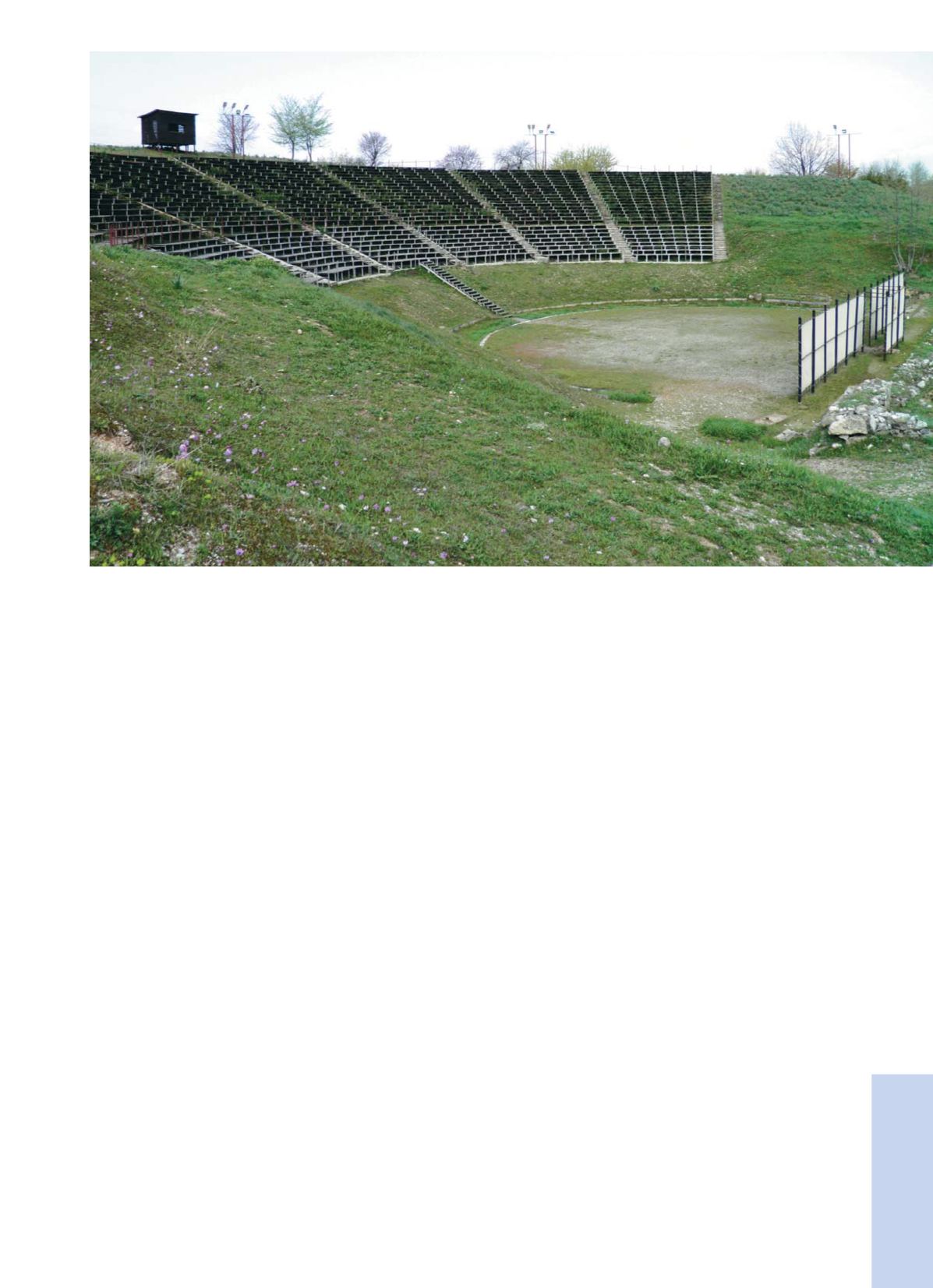
rent form is the result of successive interventions at
various stages of the town’s history.
The theatre continued to be used by Roman
colonists, after being remodelled in order to be
adapted to the new spectacles enjoyed by Roman
society and to accommodate more spectators; it
stopped being used as a performance venue during
the early Christian period (5th-6th century CE).
Systematic excavation in the theatre began in
1921, was continued in the 1950s and resumed in
1974, while a comprehensive programme for the
site’s maintenance and restoration has been in
progress since 1993. This theatre has since 1957
been hosting the Philippi Festival, which is held
every year in July and August and covers a wide
range of artistic events. Since 2011 some of the fes-
tival’s events are held at the ancient theatre of the
nearby island of Thassos.
f) Ancient theatre of Eretria
The ancient theatre of Eretria —the most impres-
sive structure in this ancient city on the island of
Evia— is one of the oldest known monuments of its
kind. It was originally built in the 5th century BC,
after the city was rebuilt in the aftermath of the
Persian Wars, and its heyday was the 4th century
BC. It is worth noting that the
koilon
of this theatre,
in contrast with most other ancient Greek theatres,
did not use the natural slopes of the citadel, but was
built on an artificial hill, created with landfills and
retaining walls that prevented landslips.
Trade with Greece
119
the walls of the
skene
were partially made of mar-
ble.
The theatre of Dion was possibly abandoned after
168 BC, was only put to rudimentary use until the
early imperial period, and was apparently rendered
totally useless after the erection of Roman theatres
on the same site. Archaeological excavations in the
area, which began in 1928 and led to the discovery
of this Hellenistic theatre, took on a more system-
atic form after 1970, while the Olympus Festival,
which was inaugurated in 1972 (and is held each
year, in July and August), soon became a cultural
institution distinguished for the quality and compre-
hensiveness of its proposals.
During its forty-year presence in the artistic scene of
Northern Greece, this festival has introduced excel-
lent plays by leading directors and playwrights, has
been established as a major cultural event, and
has, over time, attracted many faithful followers.
Special emphasis is placed on folklore events,
which are also enriched with many international
participants, while the festival has also established
a tradition in opera performances.
e) Theatre of Philippi
The ancient theatre of Philippi is built on the south-
eastern slope of the hill on which the citadel of this
Macedonian town stands (16 km west of the city of
Kavala), adjacent to and resting on the city wall. Its
origins are traced back to the reign of King Philip II
of Macedonia (mid-4th century BC), while its cur-
Theatre of Dion


